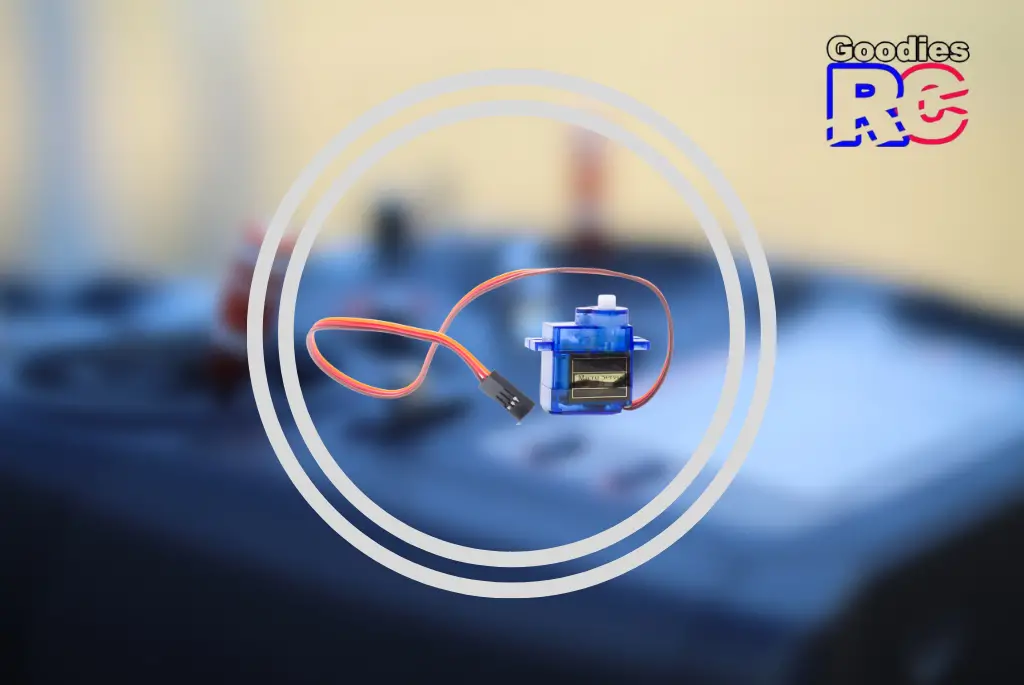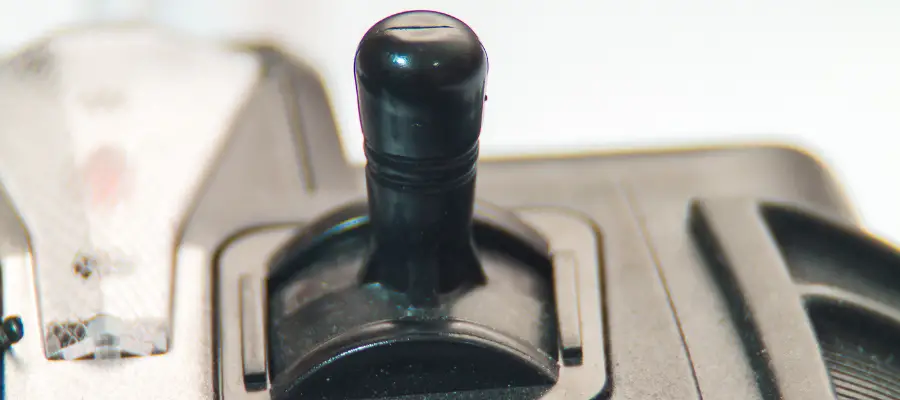The desire to control things remotely has fascinated people for centuries. In 1880, Werner von Siemens, a German engineer, developed the first wire-controlled torpedoes. British engineers developed this into a Radio Controlled, wireless system in 1897.
The term channel(s) has two different meanings for the modern RC hobbyist. The first meaning is the frequency with which the RC transmitter and receiver communicate. The second meaning is the number of channels that control the different servos on the transmission frequency.
RC cars generally use two servos to control the acceleration and the steering. In more complex models, a third or fourth channel may be added to control lights, a four-wheel-drive differential, or with a nitro car, the engine mixture control.

( Amazon link)
Everything About RC Channels
For those new to RC vehicle and their controls, all the talk about channels and frequencies can be a little confusing and daunting, to say the least!
We will attempt to explain this terminology to make it as easy to understand as possible. However, you may only really come to grips with the terminology once you get your hands on an RC vehicle!
To the average radio control modeler, there are two definitions for the word “channel.” These are.
- The transmitter’s frequency.
- The number of servos that a transmitter can operate.
Related post: How Fast Is A 2.4GHz RC Car?
When “RC Channel” Means Radio Frequency
It does not make the understanding for a newcomer to the world of RC when people in the community use the words channel and frequency interchangeably.
Radio control systems always include a transmitter, receiver, and servos.
- The Transmitter. The transmitter records the RC modeler’s inputs (either a two-stick system or a throttle and steering wheel-based system), encodes these into 1 of 7 available formats, and transmits them in packets on the radio frequency (Channel).
- The Receiver. The receiver is on the same frequency (Channel) as the transmitter and listens for signals. When it “hears” a transmission, it decodes the packets from the transmitter and separates the results into channels (instructions) which it sends to the different servos.
- The Servos. The servos are small motors that are operated by pulses of electricity. The receiver sends a pulse to the relevant servo instructing it to move forward or reverse. Each servo has a control arm, which increases or decreases the deflection depending on the operator’s control input.
Clarification On RC Channel Radio Frequency
Model radio control systems used Amplitude Modulation (AM) frequencies until recently. In the old systems, a crystal was used to set the frequency, which worked well at a set range. The problem was that if other modellers used the same frequency, the receiver would obey both sets of instructions, and chaos would ensue!
Check out this post: Can WIFI Interfere with an RC Car?
To manage this, radio control clubs used a flag system to display which channels were being used. That worked for most of the time, but many modelers had masterfully built kits turned into wooden scraps by inconsiderate modellers not first checking the frequencies.
Now Frequency Modulation (FM) transmitters are used, which are “frequency-agile” that hop between frequencies while in use. Each transmission is encoded, and only receivers tied to it can be activated.
The effect of this is that it doesn’t matter what frequency channels the different RC modelers use; only their receivers can decode the signals, which means fewer YouTube moments like these!
When “RC Channel” Means Instructions To The Servos
The servo receives an electrical pulse from the receiver and transforms it into a physical movement. Using an RC car as an example, if the throttle trigger is pulled, the servo arm will adjust the engine’s throttle position causing it to increase or decrease in speed.
If the wheel on the transmitter is turned, the steering servo arm will cause the steering wheels to rotate to the left or right.
Please see my related article: Can Any Controller Be Used On Any RC Car?
Most RC models will use more than one servo channel. A typical RC system has several proportional channels which move the controlled surfaces or devices to the exact extent that the operator manipulates the transmitter controls. These will be used.
- In RC Cars, to actuate throttle and steering.
- In RC Aircraft, to actuate elevator, rudder, ailerons, and throttle.
Other channels will function purely as on-off switches. Examples are actuating retractable landing gears, flaps, airbrakes, lamps, etc.
How Is The Number Of RC Channels Referred To?
The number of channels will be different depending on the type of RC vehicle being discussed. There will be a difference between RC cars, fixed-wing planes, and helicopters.
In RC Cars, which may have:
- Servo 1 – Throttle (forward and reverse)
- Servo 2 – Steering (left and right)
- Servo 3 – Could be used as an accessory. E.g., lights.
A 3 servo system is generally referred to as a three-channel system.
In RC fixed-wing aircraft, there is an opportunity for many more channels.
- Engine Throttle – Increases or reduces propellor speed.
- Elevator – controls the up and down pitch.
- Ailerons – Controls the bank angle.
- Rudder – Control left or right yaw.
- Flaps – Changes the wing’s aerofoil shape to improve low-speed handling.
- Gear – Retracts or drops the aircraft undercarriage.
- Lights – Controls the landing lights.
- Cargo hatch – Opens hatch to drop parachutists, bombs, etc.
With eight servos, a system of this nature would be called an 8-channel system.
Related post: Are RC Planes Considered As Drones? Here’s The Truth
RC Helicopters will have the following controls.
- Main blade Collective pitch – Increases, maintains or reduces altitude.
- Engine throttle – Increases or reduces propellor speed.
- Swash Plate control – This enables the pilot to change the pitch
- Tail Rotor – Controls YAW
A four-servo system is referred to as a 4-channel system.
The difference between RC helicopters and other RC models is that moving the “throttle” stick controls two servo channels simultaneously – The Collective Pitch and the Throttle.
How To Choose An RC System
If you are looking for an RC system, there are several considerations you can look at to make sure you purchase the optimum system for your model.
RC systems were sold as a package that included the transmitter, receiver, and servos in the past. It is now possible to select each unit individually; this gives you more flexibility but makes the buying choice harder.
The following briefly investigates each factor.
4 Considerations When Choosing An RC Transmitter

The transmitter is probably the first significant investment you will make in your RC journey. This piece of kit becomes an extension of you, controlling the model by manipulating its controls.
Question 1 – How Many Servo Channels Do You Need?
Earlier in this article, we discussed the channels you will need for the different RC applications. A good rule is to always purchase a transmitter with more channels than you need now. Doing so allows you to continue using the setup for future, more complex models.
Question 2 – What Modes Does The Transmitter Offer?
Most RC transmitters are sold with two modes. The mode determines which controls on the transmitter activate which server on the RC Model.
- Mode 1: Your right-hand controls the throttle and roll while your left-hand controls the yaw and pitch.
- Mode 2: You control your roll and pitch with your right hand, like the control yoke or joystick in an airplane—your left-hand controls throttle and yaw.
Question 3 – How Many Models Can You Set Up?
Each of your models will have different characteristics. A fast racer will need only slight movements to change the aircraft’s attitude, whereas twin-engine Dakotas may have a more graceful response.
To save each model in the Transmitters memory means you can switch from model to model without going through a lengthy setup between models.
Question 4 – The Transmitters Range
Work out how far away you will ever need to control your model, and then double it. Your transmitter needs to remain effective over this range.
Related post: Want To Go Further? How To Improve The Range Of Your RC Car
Choosing The Receiver Which Is Right For You
You will have to understand your budget and how much you are prepared to spend on receivers for your RC hobby! Receivers are just as critical as the transmitter.
If you have more than one model, you will have a receiver permanently installed in each model.
The factors you must consider when choosing a receiver
- How many servo channels can it control?
- How long does its battery hold a charge?
- Does it have a telemetry feature that allows the receiver to deliver vital data to the transmitter; for example, it can log fuel and battery levels.
The Servos You Need
Most RC servos use a standard 3-pin plug that responds to the same control signalling; this makes most servos interchangeable and straightforward to incorporate into your RC setup.
Factors you should consider when choosing the servos are.
- Size – will it fit in the model?
- Torque – is it powerful enough for the application?
- Speed – is fast enough for your application. Switching on the lights does not need to be done fast, whereas controlling a high-speed car around the track requires instantaneous responses.
If you have an RC car, you might find this article helpful: How To Choose A Servo For Your RC Car: Ultimate Guide
(Amazon link)
Conclusion
RC channels have two meanings for RC hobbyists and include the channel (frequency) on which the transmitter sends a signal to the receiver. If the two units are not on the same channel, it could ruin your day.
The second meaning relates to the number of channels (servos) that the transmitter can send, with the receiver decoding and activating the correct servo. Both terms are critical to the safe operation of an RC model.
